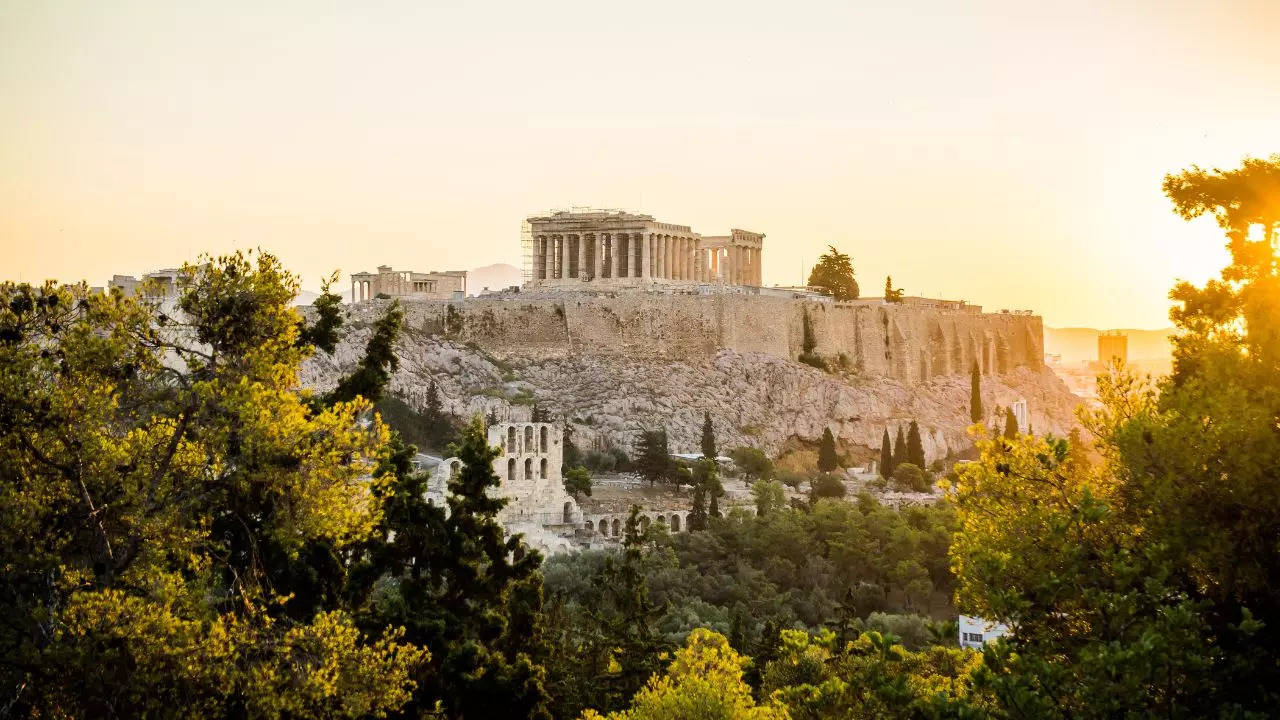
What makes the ruins of the Parthenon an enduring symbol of Athens? Credit: iStock
Summers in Athens Everything revolves around the Acropolis; most of the European tourist industry revolves around this season, and Greece It is one of the biggest epicenters of tourism, and most travelers head straight for this UNESCO site. Many incredible structures compete for your attention on this rocky hill that rises like a sentinel: the Propylaea, the Erechtheion, and the Temple of Athena Nike. But the center of attention is the Parthenona historic temple that has been watching over the city for thousands of years.

History of the Parthenon
Built in the mid-5th century BC, this temple is dedicated to the Greek goddess Athena Parthenos (“Athena the Virgin”) and was part of an elaborate rebuilding program led by the Athenian statesman Pericles after the victory of the citizens of Athens over the Persians during the Greco-Persian Wars. It was, therefore, a symbol of Athens’ freedom. The Parthenon is a masterpiece of Doric architecture, with a large colonnade, a pediment adorned with sculptures, and a frieze depicting scenes from Greek mythology.
The temple served as the religious and cultural centre of ancient Athens, housing the colossal statue of Athena Parthenos, a masterpiece by the sculptor Phidias. The Parthenon also played an important role in the political and social life of Athens, as religious festivals and public ceremonies were held there.

Much of the white marble from which the Parthenon is constructed has been damaged by the passage of time. A huge explosion during a Venetian siege in 1687 caused irreversible damage to the core of the building. In addition, many sculptures were taken by the British in the early 19th century and are now in the British Museum. The Greek government has persistently demanded their return, but the British Museum has refused, citing conservation efforts. This controversial issue remains a matter of debate.
Despite this, the basic structure remains intact and travelers can explore it during the day. The best way to do this is by taking a walking tour of the Acropolis of Athenswhich combines visits to the ruins of the Propylaea, the Temple of Athena Nike and the Erechtheion. You can also visit the Ancient Agora or take a trip to the New Acropolis Museum which houses numerous relics dedicated to this historic temple.

Overtourism in Athens
While this UNESCO World Heritage Site is high on our list of places to visit, Greece is also facing overtourism, just like the rest of Europe. Athens has experienced a tourism boom, with visitor numbers skyrocketing to over 7 million by 2023. Experts predict a further 20% increase this year, transforming the city’s once quiet streets in August into bustling thoroughfares. This has put a strain on local resources and infrastructure. To address this, the Acropolis of Athens has implemented a daily visitor limit of 20,000. An online booking system ensures that visitors are spread evenly throughout the day, easing congestion and preserving the integrity of the site.
Parthenon tickets and opening hours
There are two options to visit the Acropolis and the Parthenon:
Acropolis only:
Summer (from April 1st to October 31st): €20
Winter (from November 1st to March 31st): €10
Free admission: March 6, April 18, May 18, last weekend of September, October 28 and the first Sunday of every month (November 1 to March 31)
Combined ticket (Acropolis + 6 archaeological sites):
Cost: €30 (summer and winter)
Includes entrance to the Acropolis, Ancient Agora, Roman Agora, Hadrian’s Library, Temple of Olympian Zeus, Kerameikos and School of Aristotle.
Last year, Greece announced that it would be implementing a 50 percent increase in entrance fees to one of its most iconic attractions, the Acropolis, starting in 2025. Visitors planning to explore this historic site should be prepared to face higher costs, as proposed entrance fees will rise from the current €20 to €30.
Disclaimer:
The information contained in this post is for general information purposes only. We make no representations or warranties of any kind, express or implied, about the completeness, accuracy, reliability, suitability or availability with respect to the website or the information, products, services, or related graphics contained on the post for any purpose.
We respect the intellectual property rights of content creators. If you are the owner of any material featured on our website and have concerns about its use, please contact us. We are committed to addressing any copyright issues promptly and will remove any material within 2 days of receiving a request from the rightful owner.
